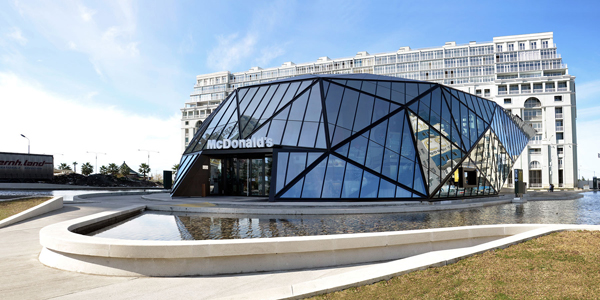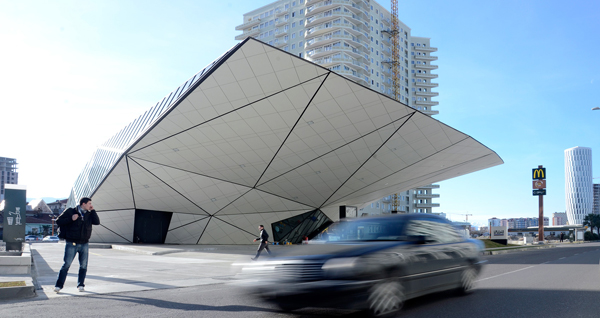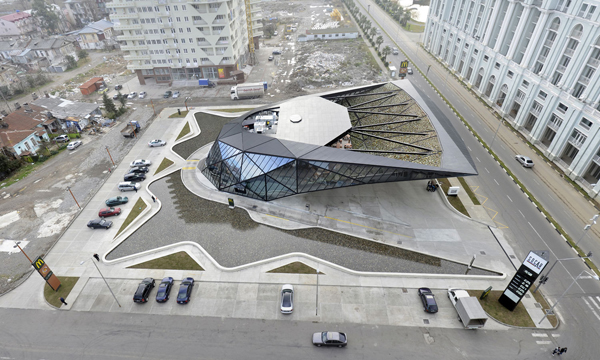The concept of a cookie-cutter McDonald’s franchise located adjacent to — or even part of — a gas station is such a common expression of America’s highway/throw-away consumer culture that it is often overlooked as just another part of the anonymous urban landscape. Leave it to the former Soviet Republics to put a fresh, provocative spin on the two-headed monster we exported.
A new McDonald’s restaurant and gas station was recently completed in the Republic of Georgia that turns the old rest-stop model on its ear with a sleek, faceted-glass shell and a dramatic, cantilevered green wall that neatly separates the food service from the car service.

Designed by Georgian architect Giorgi Khmaladze, the 13,000-square-foot building is located in a slightly run-down, but up-and-coming, neighborhood in the seaside town of Batumi, on the eastern shore of the Black Sea. In a recent article by Dezeen, Khmaladze explained how the project came about.

“The city officials wanted to avoid having a regular gas station in the middle of the area, which right now is undergoing major renewal,” he is quoted as saying. “From that departure point, I proposed to combine two programs in one building footprint.”

To ensure that a distinct and wall is erected between food and cars, the roughly circular design of the restaurant is elongated and flattened on one side, forming the cantilevered canopy that covers the gasoline pumps. Seen from the service station side, no trace of the restaurant appears; only a mosaic of white, faceted acoustical panels slowly curves from the canopy lip down the ground in a graceful arc.

On the other side, where the glassed-in entrance to the McDonald’s is located, visitors would hardly notice a gas station is contained within the same tiny footprint. Inside, the most striking feature is a gently sloping, arena-like green wall of vegetation that covers the soundproofing canopy over the pumps and conceals the dual nature of the building. The wrap-around glass walls of the restaurant gradually give way to an open-air patio, where the shrubs and other plants can soak up stormwater and help regulate temperatures.
To Western eyes, all this fuss over a fast-food joint and a filling station may seem odd. But the Batumi design is an elegant blend of refined modern art, clever practicality and low-brow commerce that would certainly brighten up the suburban sprawl in the U.S. Next step: Creating menu items made of actual food.